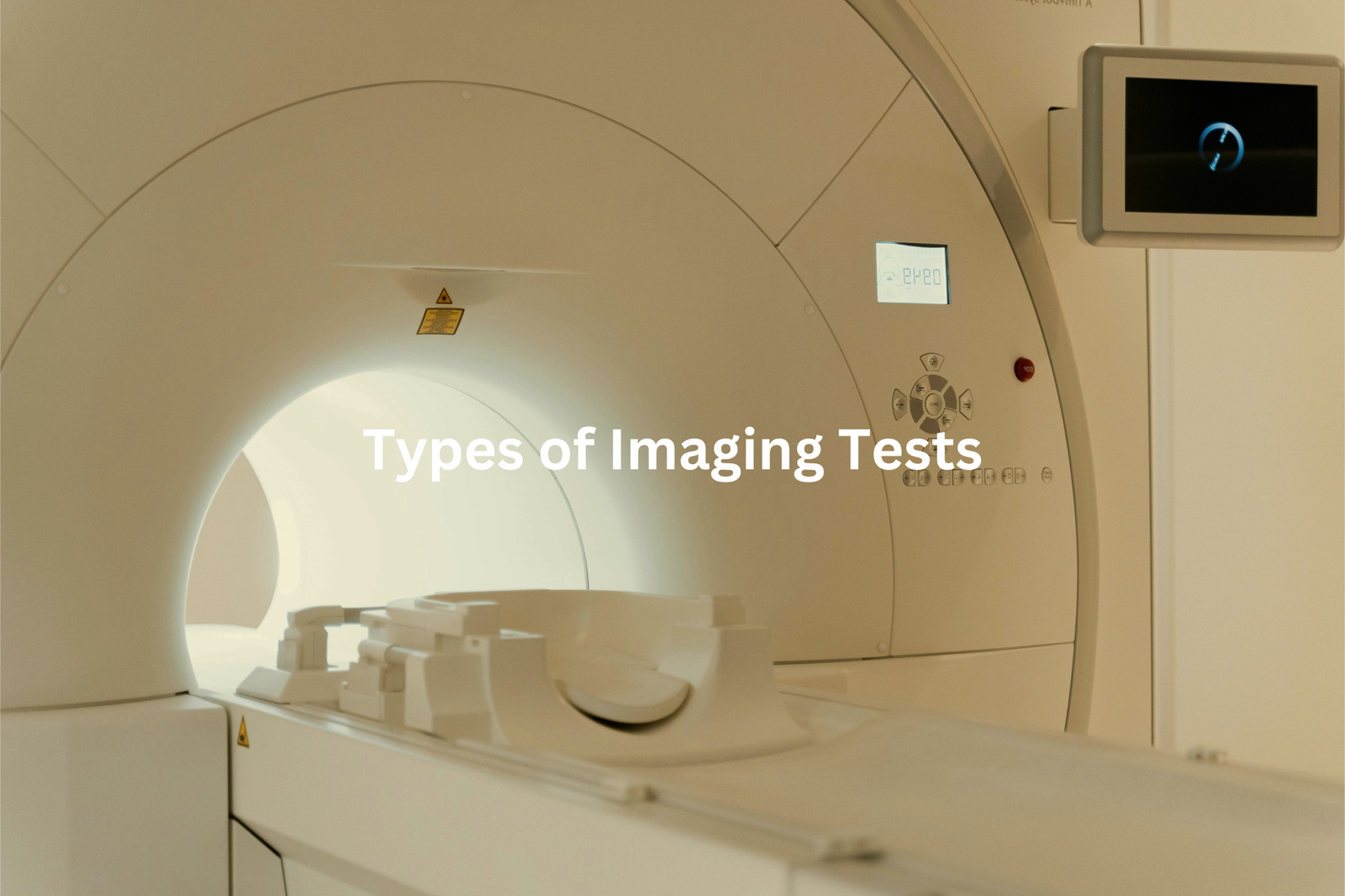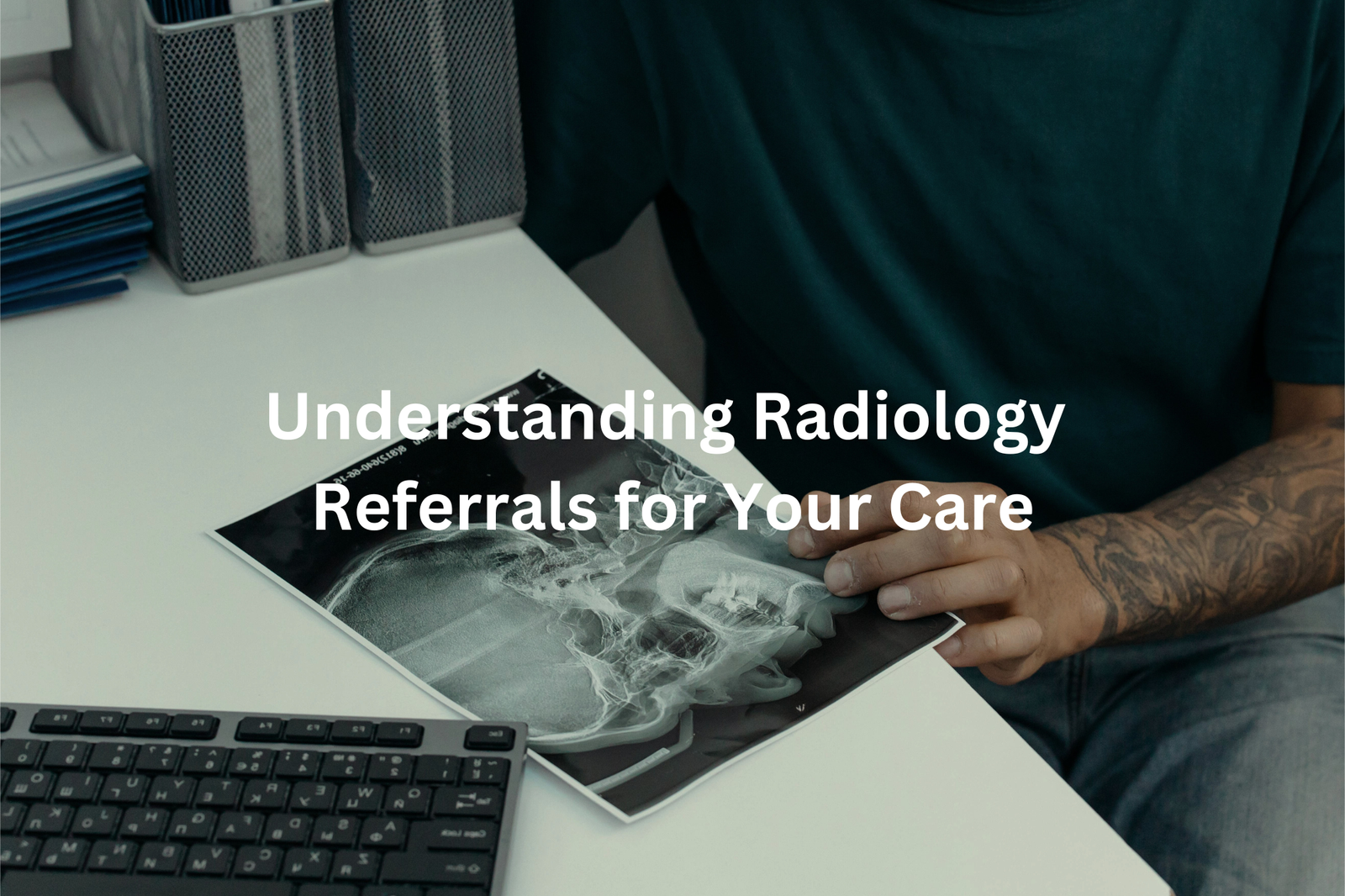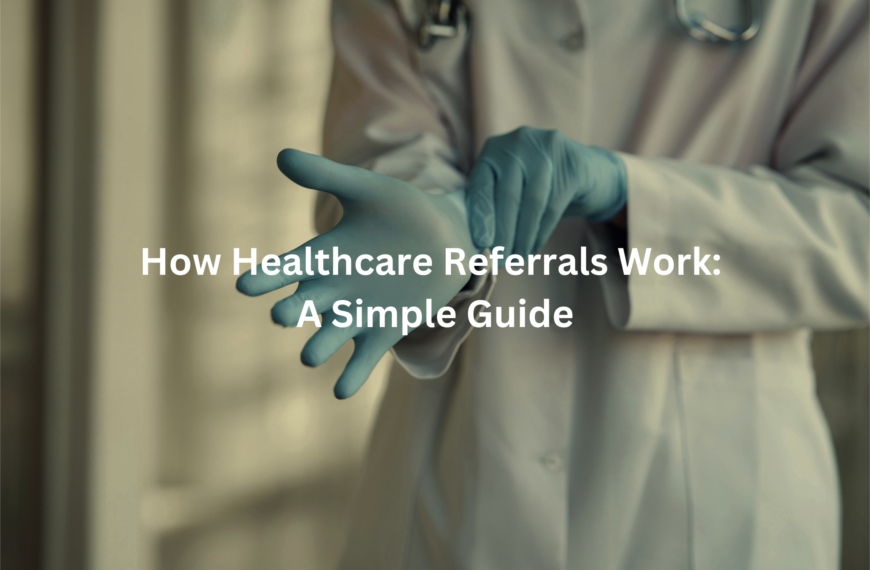Radiology referrals explained: Your first step to accurate imaging and better health care. Find out how they work and what to expect.
Radiology referrals are super important for getting the right tests, like X-rays and MRIs. When you have a health issue, your doctor might say you need these tests to see what’s going on inside your body. The referral means your doctor recommends a specific radiologist who can help.
This way, you can feel sure you’re getting the best care. Knowing what to expect can make the process easier. If you’re unsure about how referrals work or what tests you might need, keep reading to learn more. It really helps to understand before you go for your appointment!
Key Takeaway
- Radiology referrals help doctors get the right images for diagnosis.
- Patients usually see their GP first for imaging tests.
- Detailed referrals make it easier for radiologists to help patients.
What Are Radiology Referrals?
Radiology referrals are a big part of healthcare in Australia. About 40% of patients who visit their GP (general practitioner) get a referral to see a specialist, and this often includes radiology services like X-rays, CT scans, or MRIs. These tests help doctors figure out what’s going on inside the body, like spotting a broken bone or checking for other issues.
When a GP writes a referral, it tells the radiologist what to focus on. For example, if someone hurts their knee, the doctor might ask for an MRI to check for ligament damage. These referrals are usually valid for 12 months, which is handy because patients don’t need a new one every time they need a follow-up scan. Still, about 30% of people might need extra referrals after their first visit.
Patients should follow any instructions before their test, like fasting or avoiding certain medications. It’s also important to let the technician know if they have allergies. Radiology in Australia is carefully regulated by the Australian Radiation Protection and Nuclear Safety Agency, so it’s safe and effective.(1). With modern machines giving quick results, radiology referrals are a key part of keeping Aussies healthy.
The Referral Process
A radiology referral isn’t just a piece of paper—it’s the first step in figuring out what’s going on inside your body. It usually starts with a visit to your GP. They’ll ask questions, maybe press on a sore spot, and if they think imaging is the way to go, they’ll write a referral. This letter acts like a guide, pointing the radiologist towards the issue.
Here’s how it usually works:
- Referral. Your GP writes it up, including your symptoms and any relevant history (e.g., “left ankle sprain, possible ligament tear”)(2).
- Booking. You take the referral to an imaging centre—Western Radiology in Balcatta, WA 6021, is one option. They’ll schedule the scan, which might happen that day or later, depending on how busy they are.
- Imaging. The test itself—be it an X-ray, MRI, or ultrasound—is quick and painless, though the machines can look intimidating.
- Report. A radiologist reads the images and sends their findings back to your GP.
I remember hearing about Tommy, a kid who wiped out on his skateboard. His GP suspected a scaphoid fracture and sent him for an X-ray. Thanks to the referral, the radiologist knew exactly where to look. Turns out it wasn’t broken, just badly bruised. If you ever need a scan, bring your referral and ask questions if you’re unsure about anything. Oh, and skip the jewellery—metal can mess with the images.
Types of Imaging Tests

Doctors have a few different imaging tests they might use, depending on what they’re looking for. Each one has a job to do, kind of like tools in a toolbox. Here’s a quick rundown:
- X-rays: These are quick and easy. They’re used to spot broken bones, infections, or even lung problems. Think of them as the basic tool—simple but effective.
- MRI (Magnetic Resonance Imaging): This uses magnets and radio waves to get detailed pictures of soft tissues, like muscles, ligaments, or the brain. It’s good for things like checking for injuries in the spine or issues in the brain.
- CT Scans (Computed Tomography): These give a detailed, cross-sectional view of your body. They’re often used in emergencies, like if someone has severe pain or an injury, because they can show what’s wrong quickly.
Knowing a bit about these tests can make things less nerve-wracking. It’s like knowing what’s in the toolkit before the job starts. If your doctor suggests one, it’s just their way of figuring out the best way to help.
Why Detailed Referrals Matter
A good referral is like a trail of breadcrumbs—it leads the radiologist straight to the problem. Without it, they’re wandering in the dark. It’s not just about saying, “Check this person’s leg,” but more like, “Check the left knee for a torn ACL or fluid build-up.” Specifics matter.
Take a referral for an MRI. A GP might write something like, “Patient reports recurring knee pain, possible ligament tear post-sports injury.” With those details, the radiologist knows exactly where to focus. It’s like saying, “Look under the picnic table by the pond,” instead of, “Search the park.”
Here’s what makes a solid referral:
- Symptoms. Clear description of what’s wrong (e.g., “sharp pain in lower back, worse after lifting”).
- Medical history. Mentioning past injuries or conditions that might affect the area.
- Suspected issue. Guessing what might be causing the problem, even if it’s not certain (like a stress fracture or herniated disc).
I once heard about a bloke who got an ultrasound for suspected gallstones. His GP included specifics about pain timing and diet triggers. That referral didn’t just speed things up—it made the diagnosis spot-on.
If you’re ever handed a referral, double-check it. Ask your GP what they’ve written and why. It’s your map, after all. Makes sense to know where it’s pointing. And don’t forget to bring it to the imaging centre. No map, no treasure.
The Role of Medicare
In Australia, Medicare’s a lifesaver when it comes to paying for imaging tests. You know, things like X-rays, MRIs, and ultrasounds that can really add up if you don’t have the right coverage. With a referral from your GP, you get a pass to access these services at a lower cost. Without it, the bill might surprise you—especially for more expensive tests like MRIs.
Most referrals are valid for 12 months. It’s pretty handy. If you need more imaging done within that time, you don’t have to bother your GP again for another referral. It’s all covered. You just show up at the imaging clinic with the referral in hand, and you’re good to go. No extra paperwork. No waiting for another appointment.
I remember when my cousin had to get an MRI for her back injury. Her doctor gave her a referral at the start. When it was time for the follow-up scan months later, she used the same one. Saved her the trouble of seeing the GP again—just walked into the clinic with that piece of paper.
A few things to keep in mind:
- Referral’s validity. Most last a year, but check with your GP to be sure.
- Bring your referral. Without it, you might end up paying more.
- Medicare benefits. They make healthcare a lot easier to manage.
If you’ve got a referral, hang on to it. You might need it again sooner than you think.
Digital Health Initiatives
Sources: Austrade.
The Australian government is really putting effort into making healthcare simpler with digital health solutions(3). One of the standout changes is electronic referrals. Instead of giving patients a paper referral to carry around, doctors can now send them online. It’s faster, easier, and cuts down on waiting times.
Think about this—no more waiting for a paper referral to show up in the mail or worrying about losing it. With digital referrals, patients might book their imaging or specialist appointments much sooner. It’s like skipping the queue at a busy café; you get served quicker, and everything just flows better.
Another handy thing is that patients can track their referrals online. You can check when your referral was sent and even see updates about your appointment. It’s a simple way to stay in the loop and feel more in control of your healthcare. Less stress, more convenience.
Patient Experience

Talking to your doctor about any health worries is always smart. If you’re feeling unsure or nervous about an imaging test, just ask. Doctors are there to help, and no question is too small (or silly). It’s better to understand than to sit there wondering.
Radiology referrals are a key part of figuring out what’s going on inside your body. Think of it like a map—it helps your doctor see where to go next. Whether it’s an X-ray, CT scan, or MRI, these tests are tools to get answers. And knowing what to expect can make the whole process less stressful.
It’s kind of like getting ready for a big school project. If you know what’s coming, you’re less likely to feel overwhelmed. So, next time your GP gives you a referral, remember—it’s not just a test, it’s a step forward. A step towards feeling better.
FAQ
What are the steps for making a radiology appointment?
Booking radiology appointments is easy. First, talk to your medical practitioner about the need for imaging tests or scans. They can provide you with a referral form. Then, contact a radiology practice to schedule your appointment. They’ll walk you through the process of submitting the referral and making the booking.
How can I get my medical images or reports?
If you need a copy of your patient images or imaging reports, contact the radiology practice directly. They can provide you with detailed images and explanations about your medical imaging examinations. Be sure to have your referral form or other relevant information handy when you reach out.
What is the process for specialist referrals?
To see a specialist for a medical condition, your primary care practitioner will provide you with a referral. This referral can be submitted to the specialist’s office, either through a paper form or an online system. The specialist’s team will then contact you to schedule an appointment and coordinate any necessary medical imaging or testing.
How can I request an imaging exam?
If you and your medical practitioner determine that you need an imaging test, such as an X-ray, CT scan, or MRI, they can provide you with a referral form. This form includes key details about the requested exam. You can then contact a radiology practice to schedule the appointment and submit the referral.
What services do radiology practices offer?
Radiology practices provide a range of diagnostic imaging services, including X-rays, CT scans, MRIs, ultrasounds, and more. They employ trained technologists and radiologists to perform and interpret these medical imaging examinations. Practices also offer services like bone mineral density testing and evaluations for heart disease risk.
How can I submit a radiology referral?
You have several options for submitting a radiology referral. Your medical practitioner can provide you with a paper referral form that you can bring to the radiology practice. Many practices also accept electronic referrals, which can be submitted online or via fax. Some even offer editable PDF referral forms that you can fill out and send digitally.
What should I do if I have questions about my referral?
If you have any questions or concerns about your radiology referral, such as the appropriateness of the requested exam or the status of your electronic submission, don’t hesitate to reach out to the radiology practice. Their friendly phone reception staff can assist you and provide detailed explanations about the referral process.
Conclusion
Radiology referrals are super important for getting the medical imaging services you might need. Knowing how the process works and the different types of tests can really help. Detailed referrals can make a big difference. You should always talk openly with your doctors and nurses to get the best care possible. This way, you’ll feel more confident walking through the healthcare journey. Keep asking questions and don’t hesitate to share your concerns. Your health matters!
References
- https://hellogp.com.au/radiology-referrals/
- https://clcs.org.au/services/data/discrete-services/referral-services/
- https://www.aihw.gov.au/reports/australias-health/digital-health




